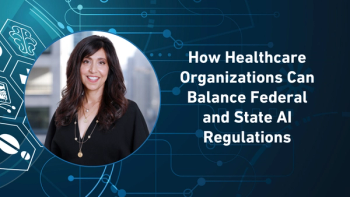
High access to physicians by pharma reps correlates with faster uptake of new medical information
In-depth statistical analysis using ZS Associates and IMS Health prescriber data demonstrates the value of rep-sourced communication
An impressively comprehensive study, involving prescribing records of upward of 72,000 US physicians, makes a compelling case for the utility of having reps call on physicians. The study, “Can Access Limits of Sales Representatives to Physicians Affect Clinical Prescription Decisions? A Study of Recent Events with Diabetes and Lipid Drugs,” was published in the May 21 edition of J. of Clinical Hypertension (JCH), a peer-reviewed journal that is the official publication of the the American Society of Hypertension, Inc.
The authors, led by George Chressanthis, PhD, professor of healthcare management and marketing and acting director for the Center for Healthcare Research and Management at Temple University's Fox School of Business, used three instances of clear changes in prescribing recommendations: 1) the introduction of Merck’s Januvia (sitagliptin), a first-line therapy for diabetes; the black-box warning for Avandia (rosiglitazone), GSK’s diabetes drug that came under fire after a 2007 study showed elevated heart risks; and the negative outcomes reported for Vytorin (simvastatin + ezetimbe), a Merck anti-cholesterol product that was found to have poor results in a study in 2008.
By comparing physician access (as measured by ZS Associates’ AccessMonitor database) with prescriber data (from IMS Health), the authors were able to determine that it took 1.4 to 4.6 times as long for low-access physicians to prescribe Januvia, relative to high-access physicians; that low-access physicians were 4.0 times slower to reduce Avandia use; and that there was “significantly less response” to the negative news about Vytorin from low-access prescribers.
It is worth noting that the authors were looking both at net positive results (Januvia) and net negative results (Avandia and Vytorin) in comparing physician responses; one could argue that reps are very good at touting the benefits of their products, but their ability to steer physicians away from a competing therapy is less certain. The study is also a showcase for ZS Associates’ AccessMonitor, which is based on data provided by pharma clients to ZS about schedules of expected and actual rep calls on individual physicians, updated semiannually.
The rep-access issue is a longstanding argument raging between the pharma industry and its critics; similar to an earlier flareup over research papers ghostwritten by contractors paid by pharma companies, and, before that, continuing medical education funded by pharma companies. While the restrictions on these communication channels have generally progressed over the years, it now looks as if physicians have less access to up-to-date medical information than they used to. “These findings emphasize that limiting access to pharmaceutical representatives can have the unintended effect of reducing appropriate responses to negative information about drugs just as much as responses to positive information about innovative drugs,” the authors conclude.
High-access hotspots
In the course of composing the study, its authors also provide an interesting peek at how physician access restrictions have progressed. ZS data indicates that the proportion of high-access physicians has fallen from 74% in 2008 to 55% in the first half of 2011. A map published with the study shows that access is most restricted in New England and the Upper Midwest and the West Coast, and least restrictive in the deep South. ZS also calculated access limits by medical specialty: the most limited are nephrology (68%), oncology (57%) and cardiology (54% being the most restricted, and urology, ob/gyn and allergy being the least restrictive (21-28% low access).
Newsletter
Stay ahead in the life sciences industry with Pharmaceutical Commerce, the latest news, trends, and strategies in drug distribution, commercialization, and market access.




